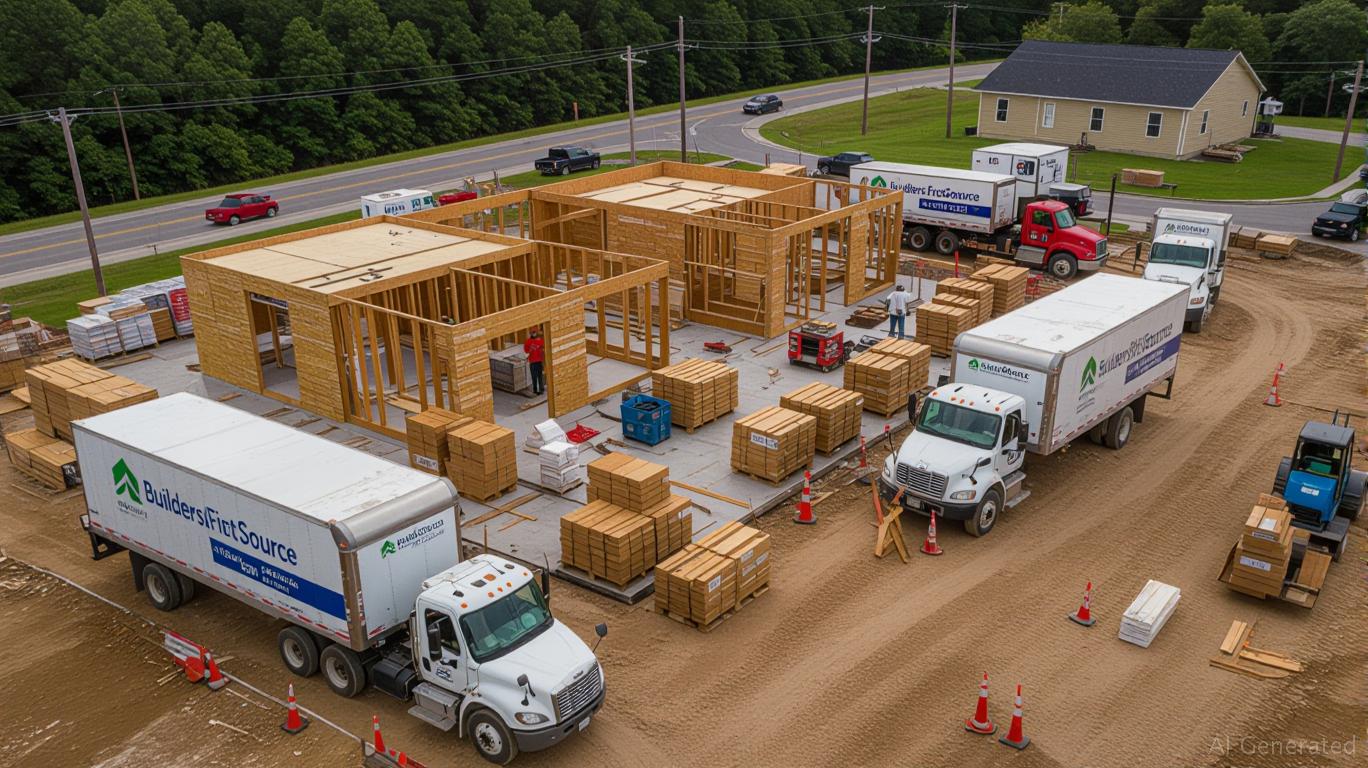Builders FirstSource: Navigating Near-Term Headwinds for Long-Term Gains
The housing market's decline has taken a toll on
(BLDR), with Q1 2025 revenue down 6% year-over-year to $3.7 billion. Yet beneath the surface, the company is demonstrating strategic resilience through robust liquidity, disciplined capital allocation, and a focus on long-term housing demand fundamentals. Let's dissect whether is positioned to outlast the downturn and deliver gains for patient investors.
Liquidity: A Buffer Against Volatility
Builders FirstSource's liquidity position stands out as a key defensive moat. As of March 31, 2025, the company maintained $1.1 billion in total liquidity, including $944 million in revolving credit availability and $115 million in cash. This cushion is critical in a sector where housing starts have fallen by double digits year-over-year.
While net debt rose to $4.4 billion, the company's net debt to LTM Adjusted EBITDA ratio of 2.0x (up from 1.1x in 2024) reflects aggressive growth investments rather than distress. Crucially, free cash flow guidance of $800M–$1.2B for 2025 suggests the company can deleverage over time if commodity prices (like lumber) stabilize.
M&A: Fueling Long-Term Growth
The company's acquisition strategy has been a growth accelerant. In Q1 2025, M&A activity contributed 4.7% revenue growth, offsetting declines in core organic sales. This pattern hints at a playbook of using downturns to acquire smaller competitors at discounted valuations.
Analysts estimate BLDR's total addressable market in the U.S. remains robust, with 48 of the top 50 and 92 of the top 100 metro areas within its footprint. Expanding market share through strategic deals could pay off when housing demand rebounds.
Underlying Demand: The Long-Term Case
The near-term pain in housing is undeniable—Single-Family starts are projected to drop mid-single digits in 2025, while Multi-Family faces a mid-teens decline. But two factors suggest a recovery is inevitable:
- Demographics: The U.S. population grows by ~1% annually, and millennials/Gen Z are still under-housed.
- Supply Constraints: Even as starts drop, the existing housing stock's age (median age of ~40 years) means replacement demand will eventually rise.
Builders FirstSource's geographic diversification and value-added services (e.g., pre-cut lumber, digital tools for contractors) position it to capture this demand when the cycle turns.
Investment Considerations
Risks: - Prolonged softness in housing could strain margins further. - High leverage could limit flexibility if commodity costs spike.
Opportunities: - Share repurchases: The $500M buyback announced in April 2025 (on top of $8B spent since 2021) signals confidence. With shares down ~25% YTD, the valuation is compelling at 12.7x forward earnings. - Operational discipline: The $70M–$90M cost-savings target for 2025 could stabilize margins even in a weak environment.
The upcoming Q2 earnings on July 31 will test management's ability to guide through the downturn. Watch for free cash flow execution and updates on housing starts trends.
Final Take
Builders FirstSource isn't immune to the housing slump, but its liquidity, acquisition strategy, and long-term demand tailwinds make it a hold for the long term. For investors willing to weather near-term volatility, BLDR's stock—trading at a discount to its 5-year average P/E of 18—could offer asymmetric upside as the housing cycle rebounds.
Investors should monitor the July 31 earnings call for clarity on margin recovery and capital allocation priorities.
Sign up for free to continue reading
By continuing, I agree to the
Market Data Terms of Service and Privacy Statement

Comments
No comments yet